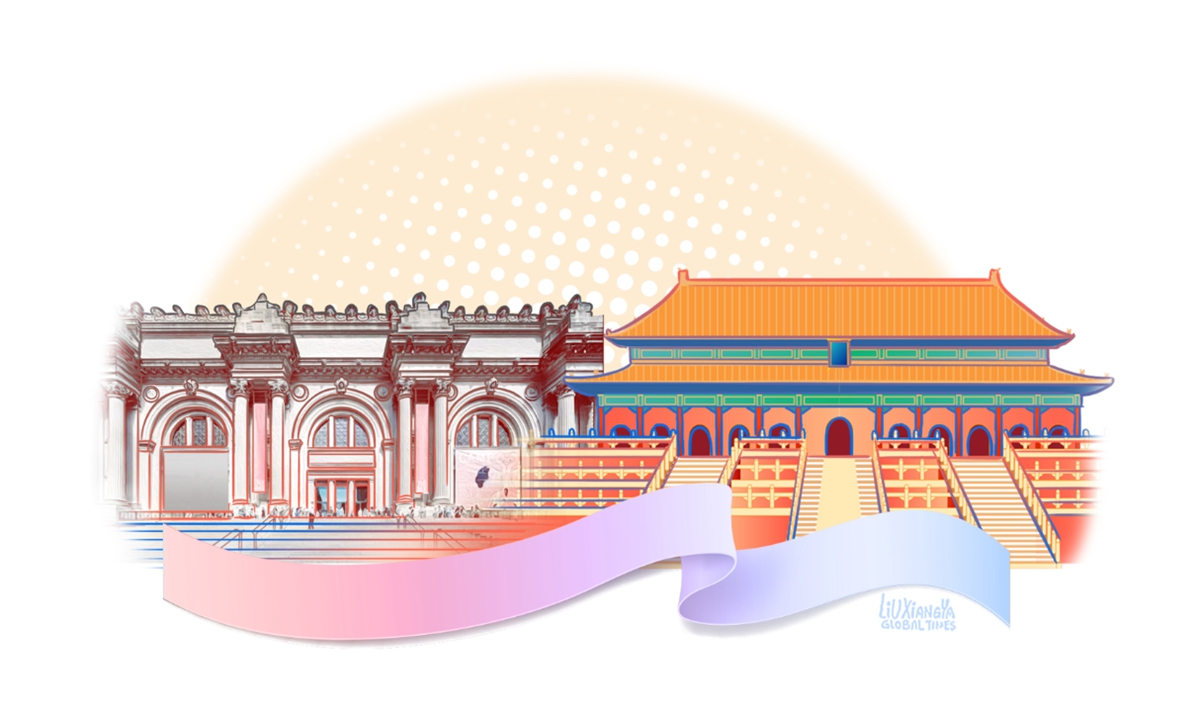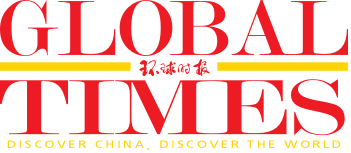
Illustration: Liu Xiangya/GT
The recent Pritzker China-US Museum Leadership Forum at Chicago's Field Museum has become a cultural barometer for bilateral relations, gathering experts from over 20 premier institutions across China, the US, and Canada, according to the Xinhua News Agency.
This intellectual confluence, focused on topics such as global collaboration and digital innovation, achieved a milestone through a memorandum of understanding (MOU) signed between the Pritzker Art Collaborative and the Chinese Museums Association - establishing a sustainable framework for museum cooperation between the two countries.
As David Pritzker, director and chief curator of the Pritzker Art Collaborative, insightfully noted during the opening speech, "The best way to build trust is to have shared experience."
This philosophy materialized through the topic "Museum Collaboration during the New Globalization Era: Opportunities and Challenges," thus strategically aligning with this year's International Museum Day theme of "The Future of Museums in Rapidly Changing Communities," which focused on how museums can navigate and contribute to a world undergoing profound social, technological, and environmental shifts.
Exhibition narratives are being reimagined as dynamic conversation starters.
The new exhibition
Recasting the Past: The Art of Chinese Bronzes, 1100-1900, co-organized by the Shanghai Museum and the Metropolitan Museum of Art, exemplifies this shift.
Featuring 200 artifacts spanning a millennium, this exhibition that opened at the Metropolitan Museum of Art in late February serves as both a 45th-anniversary homage to the groundbreaking
The Great Bronze Age of China show in 1980 and a contemporary rebuttal to static cultural perceptions.
Over the past 45 years, museum exchanges between China and the US have flourished.
Luo Wenli, deputy director of the National Cultural Heritage Administration, emphasizes that such collaborations enable Americans to "witness the vibrant continuity of Chinese civilization through its creative transformations."
Behind the exhibition planning is the wisdom of experts from both countries, who are building an international cooperation network involving "resource sharing and complementary advantages."
These exhibitions can also break some stereotypes.
The 2024 exhibition
Phoenix Kingdoms: The Last Splendor of China's Bronze Age, co-organized by the Hubei Provincial Museum in Central China's Hubei Province and the Asian Art Museum in San Francisco, the US, demonstrates archaeological exchanges in action. By showcasing the stylistic continuity of bronze artifacts, the exhibition effectively countered Western notions of Chinese cultural discontinuity, giving a clear picture of Chinese history.
At exhibitions like these, cultural relics on display are no longer static exhibits, but rather "translators" of civilizational dialogue.
Digital innovation has also emerged as the new frontier in cultural exchange.
The forum's "AI, the New Digital Age: Reshaping the Future of Museums" sessions revealed transformative projects such as the Dunhuang Academy's virtual grottoes, Shaanxi History Museum's digital mural preservation and Shanxi Museum's 3D-reconstructed Northern Dynasties (386-581) tomb murals.
After participating in the forum, Wang Xiaoyi, director of the Shanxi Museum, told the Global Times that ancient tomb murals are a distinct part of the collection at the museum as Northern Dynasties-era murals represent the pinnacle of artistic achievement.
He noted that by integrating digital innovation with traditional practices across the fields of protection, research, and display, the Shanxi Museum has established a distinctive end-to-end model for safeguarding and utilizing the country's tomb mural heritage.
Technology also enables novel institutional models.
The Shanghai Museum's planned overseas branch at California's Bowers Museum will combine physical displays with digital exhibitions, creating a permanent window into Chinese art without the risk that comes with transporting delicate artifacts.
The two sides signed an MOU in early March, setting the stage for the establishment of a permanent gallery in the US dedicated to ancient Chinese art.
These collaborations ultimately serve as bridges between people.
As Chinese Consul General Wang Baodong noted in his Chicago address, improved US-China relations is "the common wish of the people of the two countries."
Museums transform this vision into action - whether through US children crafting replicas of pottery from the Tang Dynasty (618-907) or Chinese conservators sharing preservation techniques with US counterparts.
From bronze ritual vessels to binary code, these exchanges follow the logic of "celebrating uniqueness while creating shared beauty."
In an era of geopolitical turbulence, they demonstrate that cultural differences need not divide but can instead spark innovation.
When museum directors coming from Washington and Beijing shake hands in Chicago, they are not merely signing agreements, but are co-authoring a new chapter in civilizational coexistence.
As the Pritzker collaboration shows, shared cultural stewardship might just hold the key to building trust between nations.
The author is a reporter with the Global Times. life@globaltimes.com.cn




